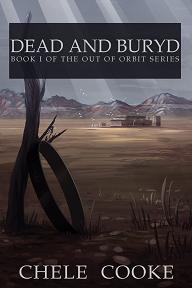Wow, Time and All That … Sure has slipped by.
Wow, it’s been two years since I last wrote anything on this blog. That’s because I was writing a novel that went haywire and needed a lot of re-writes, and after that I just wanted to go supine on the couch and read. Which I did. For a long time.
A lot’s happened since then. The cliche about how awful 2016’s been just goes to show how awful 2016’s been. So, there was that. I’ll blame 2016. 2016 kept me from updating this blog.
So, anyway, I’m writing a new novel now. You know that last post I did about writing and editing? Well, I talked there about how I’m too lazy to plan novels. Yeah, about that …
I’m actually too lazy to undergo the kind of re-writing necessary to get the story right if I don’t plan novels. Because I had to completely re-write my previous novel. A lot. More than a lot. Because I kept getting the story wrong. I know now that this kind of thing happens if I don’t plan my novels at least a little bit. And all those wall-to-wall re-writes weren’t in the least bit fun.
So, after reading my last novel about three or four times (bless her), my kick-ass agent suggested it might not be a bad idea if I worked the story and pacing and beats out a little bit before I tried writing it again. Once I got over the ego-bruise of enduring the intolerable suggestion that my writing routine could use a tweak or, well, an entire re-think, I got a copy of the book she recommended I look at. It was a book for screenwriters, and there was a lot there I disagreed with (for instance, I love the film Memento), but the gist of it made sense, and I’ve always appreciated a certain cinematic immediacy to fiction, so I did what the book said. I even bought a corkboard and covered it in notecards. And what I discovered is that I kind of like the whole panning thing. Okay, so, it was easier to plan and corkboard something when you’re on your fifth draft of it and already mostly know what’s going to happen. But, I ended up with a better novel. One that was suitable to send out. Yeah, okay, it crashed and burned when it went out to publishers, but it crashed and burned to high praise, which is something, right? Most editors said it was better than my previous novel. (Yeah, I figure they say that kinda thing to a lot of authors.)
Which brings me to … my current novel. This one, unlike any other novel I’ve written, was planned in a fair amount of detail from the start. I even wrote a blurb first, the main pitch. The planning took me a couple months. It gave me headaches. But it also gave me a condensed version of all those a-ha moments I got from previous writing. In other words, it wasn’t a dry, formulaic process. It was imaginative, and satisfying, and it has made the actual writing much less exhausting, much less stressful. Because I’m not simultaneously trying to write good fictive prose and also trying to figure out what’s going to happen. Gone is that big dense white wall of nothing that used to sit right there one cursor space beyond the end of the sentence I was writing. Now, there’s story beyond that sentence. And that takes some of the pressure off. I’m not flying along, frantically flinging words onto the page, free-styling at the very edge of the storyline, hoping that sheer momentum will propel me into whatever the next story event may be, so that to miss even a day of writing might mean the pace and the story simply die because I’ve dared to slow down and I need that speed, speed, speed to show me what’s going to happen next, and next, and next, pant, pant, pant. No sir, confident in the knowledge that I have a good idea of where I’m going, the pressure to write five or six pages every single day, and the panic that ensues if I miss a day, has evaporated. Yes, I still write everyday (mostly), but if I miss a day? If I take a weekend off? Not a big deal. I do have a family and a job and a life and all that. And those things need attention, too.
So yeah, it’s a more deliberate process. But I like to do things on purpose, rather than stumble through them by accident. It makes me feel a little bit like I know what I’m doing. And there are still surprises. Characters have still popped up and said, You know, I think I can fit into your plan, so have some fun with me. And I like that.
So, for all its otherwise nauseating and downright terrifying, depressing shittiness, 2016 did see, for me, the discovery of a healthier, saner writing process. Now, just don’t get me started on Trump, or Brexit, or Bowie, or, or or ….
Editing and the Writing Gremlin
 This post features a photo of the little stuffed fella my son gave me years ago. I call it my Writing Gremlin (not really; I just made that up right now), and it sits on my desklamp. That is all.
This post features a photo of the little stuffed fella my son gave me years ago. I call it my Writing Gremlin (not really; I just made that up right now), and it sits on my desklamp. That is all.
I recently read a post by Jen Williams about her editing process. I commented that reading it made me realize something: when it comes to editing, I’m impatient and lazy. She requested I write a post detailing my editing process, because she’s nosy. It’s been a long time since I’ve blogged, because when I’m writing a novel, I can write nothing else. But—yay, me—I’ve just finished my second novel, so I have no excuse. Also, her post features a picture of a ceramic dog that has nothing to do with editing. Perhaps that inspired me to include the photo of the Writing Gremlin. Maybe I’ll name it Harold.
Writing novels exhausts me. And because I’ve never heard writers mention how energized they feel at the end of a project, I figure writing novels exhausts others, too. For me, a draft’s final stages involve shortness of breath, an inability to concentrate on anything other than finishing the novel (including family members, day job, and episodes of Daredevil), and a mental tape loop at the back of my head saying, “I can’t keep this up. I can’t keep this up.” Sometimes, that loop expresses itself via my own vocal chords out of my own big mouth.
So when I finish, I’m done. I don’t write anymore.
Oh wait, editing.
Editing.
Standard procedure on editing runs like this: Finish draft. Put draft away. Come back 4 – 6 weeks later, sit down and re-read draft, alpha to omega. Fix what re-read shows needs fixing. Send to beta-readers. Wait another 4 – 6 weeks for them to get back to you. Incorporate points consistent across your beta feedback or not, as you see fit. Spellcheck.
Only at this point is it okay to imagine the novel might be done enough to send to editors, agents, sympathetic family members, Writing Gremlins named Harold (Harold? Really?), etc.
As mentioned, I’m lazy and very impatient. So impatient that I find planning a novel to be physically impossible. (I know some authors who make spreadsheets. Spreadsheets.) I just start writing, and force the thing along, intuiting what I can of the story trying to unfurl itself onto the page through my clumsy words.
Usually this draft is abandoned about 75% of the way through, the point at which events must coalesce into an ending. The second draft is then spent in search of that elusive ending.
Then I edit.
That was how the first novel went, anyway. My most recent novel was so wrong at this stage, I basically had to start over. I figured out I was trying to cram two novels’ worth of story into one. At least I have a running start on the sequel, so, yay for that, I guess. (Also, there was a foray from the here-and-now into a secondary world that I would prefer never having to speak of again.)
So, back to an empty page. This time, I had enough raw material to afford some planning. This led to a re-imagining of the ending that would keep things in the here-and-now and away from the Place-Which-Shall-Never-Be-Written-About. I ended up with a workable story.
At last, editing.
But I’m exhausted, and it’s not the kind of exhausted that will be remedied by taking a month away from the draft to let it cool. This exhaustion will only be remedied by getting the text off my mind, which entails sending it away, attached to an email.
So I do not let it sit for 4 – 6 weeks. I start editing right away. (Actually, this time, I took a three-day break and drank too many martinis, but that’s beside the point.) My reasoning is that 4 – 6 weeks have passed since I’ve written the first act, so it has cooled enough. And by the time I reach the end, the thought of finishing will be sufficient to steamroller me through.
The process itself was to reduce 130K words to under 100K. I did this a chapter at a time. I opened the previous draft. For each chapter of the new draft, I opened a new document. Into this I pasted the old chapter, paragraph by paragraph. If a chapter was, say, 3700 words, the goal was to get the new chapter below 3K. A 250-word paragraph had to come in under 200. Sometimes this was easy; the amount of crap I write at each chapter’s start, just to get to the good bits, can get chopped. Sometimes, though, the process involved cutting entire sections from the middle and figuring out ways to incorporate the remains into the next chapter along, and so on. Those were the headachy times where I reached for caffeine, sugar, or those other things which for several reason we won’t mention (to quote Rufus Wainwright).
This consumed every spare second of every day, paragraph by paragraph, including weekends, where twelve-hour days were the norm—not because I was inspired or possessed of some uber-enviable work-ethic, but because I’m impatient and lazy. I knew stopping for 4 – 6 weeks would make finding the energy to get myself going again impossible. I wanted the thing done and sent off (and thus off my mind).
This lasted 3 – 4 weeks.
I ended up with 105K words.
Then I spellchecked.
I spellchecked again.
Then sent off.
Inevitably, there will come more editing. A spellcheck doesn’t catch when you typed ‘once’ instead of ‘one’, for example. Awkward sentences, yeah, I wrote a lot of those and didn’t catch every single one. Ideas have since occurred that will improve certain scenes. But, for now, I’ve sent the novel off. So I will wait to do these next tasks.
Probably about 4 – 6 weeks.
And that, at least for the most recent novel, is my editing process. I only use that for novels, though. For blogs, I’m too impatient and lazy to do anything other than write, spellcheck, and post.
Maybe the Writing Gremlin’s name is Prosecco. Or maybe something other than writing is on my mind.
The Miniaturist by Jessie Burton
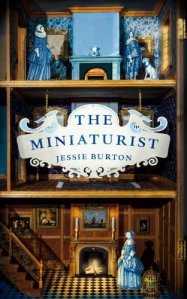 I always thought writers had to publish two or three novels before they delivered a masterpiece. Song of Solomon was Toni Morrison’s 3rd, Beloved her 5th. It took Cormac McCarthy four previous novels before he wrote Blood Meridian. Debate all you want about your favorite Stephen King novel; for me, he became a big hitter with The Shining, his 3rd. Every once in a while, though, a novelist starts big. Real big. Think Emily Bronte. Harper Lee. Think Donna Tartt. With The Miniaturist, Jessie Burton falls into this latter category. She’s delivered a major work on her first try. And, unlike Bronte and Lee, I suspect she’ll deliver many more.
I always thought writers had to publish two or three novels before they delivered a masterpiece. Song of Solomon was Toni Morrison’s 3rd, Beloved her 5th. It took Cormac McCarthy four previous novels before he wrote Blood Meridian. Debate all you want about your favorite Stephen King novel; for me, he became a big hitter with The Shining, his 3rd. Every once in a while, though, a novelist starts big. Real big. Think Emily Bronte. Harper Lee. Think Donna Tartt. With The Miniaturist, Jessie Burton falls into this latter category. She’s delivered a major work on her first try. And, unlike Bronte and Lee, I suspect she’ll deliver many more.
The novel starts with a haunting prologue detailing a mysterious funeral that occurs shortly after the conclusion of the novel’s main events, leaving us to puzzle at the identity of the deceased as we read the succeeding chapters. The story proper, though, begins in 1686 with the arrival of 18-year-old Petronella Oortman (Nella) to her new home in Amsterdam. Innocent of the city’s ways, she has been married off to an older, wealthy merchant named Johannes Brandt. We witness events only through Nella’s eyes as she tries to negotiate the undercurrents of this strange, and rather spooky, household. Her husband is rarely around, sleeps in a separate bedroom, and though affectionate and caring, remains distant. His black-clad brooding sister, Marin, dominates affairs when Johannes is absent, and often when he is home. The servants seem to know more than Nella knows, but aren’t telling. Feet fall softly in the hallways at night, incoherent mumblings meander through the passages, and doors quietly open and close.
Then Nella receives her wedding gift—a large wooden cabinet containing an exact, though miniature, replica of the Brandt household. To furnish it, she contracts the services of the novel’s title character. Though we only catch glimpses of the enigmatic Miniaturist (Nella sends letters, and receives packages in return), the items that begin to fill up the cabinet show nothing but the most exquisite craftsmanship; items of furniture, for instance, that are precise copies of those in the Brandt house down to the most minute details. But, even more eerie, the Miniaturist begins to send Nella, unrequested, little wooden figurines of the house’s occupants that display an uncomfortable familiarity with their personal lives.
Frightened and intrigued, Nella tries to pursue the Miniaturist in the hopes of uncovering the secrets that surround her. Bit by bit, she discovers just how much danger she faces.
Told in strikingly vivid prose that engages all our senses, we are immersed in the world Burton has evoked. We see and smell 17th Century Amsterdam, we feel the damp cold of the Brandt house as winter closes in and the days grow dark. And we travel the twisting pathways of Nella’s thoughts—confused, lonely, frightened, increasingly courageous, and always delightful—as she unknots the mysteries that bind the Brandts. The Miniaturist satisfies like only the best of literature can. Bravo.
Blackbirds by Chuck Wendig
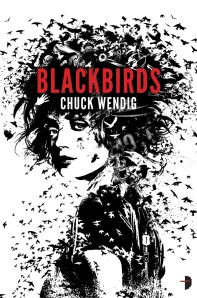 Blackbirds was when Chuck Wendig began to shine. In fact, he describes his previous novels as “garbage and should not be spoke of lest they hear us talking about them”. Not so, Blackbirds. This book pops and fizzes with talent.
Blackbirds was when Chuck Wendig began to shine. In fact, he describes his previous novels as “garbage and should not be spoke of lest they hear us talking about them”. Not so, Blackbirds. This book pops and fizzes with talent.
It tells the story of Miriam Black, a twenty-two year-old loner on the road, making her way from hotel to hotel, bumming rides, chain-smoking and, well, seeing death. All she needs is to brush her skin against yours and, in that instant, whether she likes it or not, she sees the exact date, time, and manner of your death. This can be downright depressing at the best of times, but imagine what happens when she tries to make her way through a crowd. Needless to say, she finds it tough to give much of a damn about anyone when she knows exactly when and how they’ll begin to assume room temperature, especially when she knows she can do nothing to stop it. Indeed, every time she tries to save someone, she simply ends up bringing about the doom she’s foreseen. Miriam is the unwilling instrument of fate.
And she’s drifting along, resigned to this, until she meets Louis, a truck-driver she actually begins to care about. Problem is, the death she foresees for Louis is soon, and involves him calling her name.
What’s a gal to do?
Wendig takes us on a road trip that breaks the speed limit at every chance, and does so with a muscular prose-style, grim humor, and some of the most inventive profanity you’ll ever read. In just one example, Miriam, in a desperate hurry behind the wheel, thinks of the gridlock she’s faced with as “… traffic locked up tighter than a handful of tampons crammed up a nun’s asshole.” You tell ‘em, Chuck.
Oh, and by the way, we’re in luck. Miriam Black holds an exalted enough seat in Wendig’s imagination to have deserved two follow-ups so far—Mockingbird, and The Cormorant. He’s also begun another superb series with The Blue Blazes, reviewed here.
Happy reading!
Halloween Short – Party at the Witch House
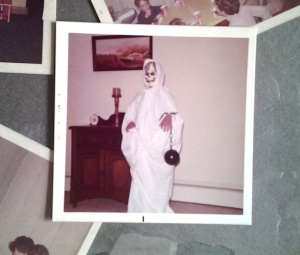 To celebrate World Fantasy Con 2013, myself and several authors, all of us represented by the fabulous Juliet Mushens of The Agency Group, have decided to write Halloween-themed shorts. As Andrew Reid (a member of “Team Mushens”) has explained here, we will cross-link the stories via Twitter. Since the convention opens on Halloween night, and I add another year to my life two days prior (no wonder I think scary is fun, eh?), I suspect I’ll be lucky to remember this year’s debaucheries at all. If you see me in the bar, and I’m a mess, please be kind.
To celebrate World Fantasy Con 2013, myself and several authors, all of us represented by the fabulous Juliet Mushens of The Agency Group, have decided to write Halloween-themed shorts. As Andrew Reid (a member of “Team Mushens”) has explained here, we will cross-link the stories via Twitter. Since the convention opens on Halloween night, and I add another year to my life two days prior (no wonder I think scary is fun, eh?), I suspect I’ll be lucky to remember this year’s debaucheries at all. If you see me in the bar, and I’m a mess, please be kind.
Anyway, here’s my entry. Enjoy!
PARTY AT THE WITCH HOUSE
As a nine-year-old on my first day of 4th grade, I endured three fights, one each recess, a different kid each time—and each time, I lost. I was new; everyone expected their shot. The next day brought fresh opponents and fresh defeats, but the days passed. I worked my way through the boys in class, and started tying, then winning. My rank in the pecking-order was established. Certain kids knew they could pick on me. Others knew to back off. Problem was, where I came from, I was near the top. Middle wasn’t my style. So I kept challenging those top three, the ones who’d started it.
And kept losing.
One afternoon, they all followed me home, jumped me from some bushes, and beat me silly. Luckily we were practically in my backyard, in view of the kitchen window. By the time my mom stormed out, they had me pinned to the ground, taking turns stomping on my chest. After they’d run away, she said, in her hippy earth-mother 70s way, “The universe will balance it.” Then, she added, “It sure as hell better, anyway.”
That night, my dad called their dads:
“I got no issue with one-on-one. But three-one-one doesn’t cut it with me. How about you?” Same words each call.
I think he got through to them, because next day at school all three top boys ignored me. Until one, Karl Ward, a kid so muscular for a nine-year-old they called him Boulder Shoulders, approached me at lunch and said, “You really live in that house?”
Our house was big and old and needed a coat of paint.
“Yeah.”
He blew out a breath. “How you still alive? I mean, that’s where the witch lived.”
It gave me an idea.
See, I was born two days before Halloween, and that year, Halloween was a Saturday. The next five or six weeks saw me playing class clown and joking my way into trust of the top three, so that when the time came, they saw my invitation to a sleepover birthday party on Halloween night in the Witch House exactly how I wanted them to—as a challenge to their bravery. They couldn’t laugh that off. Or refuse.
On the day of the party, my mom helped me rig up her stereo and prepare the basement. We placed one speaker in the entry hall, and another in the laundry room near the basement door. We played an album any 70s child will know, The Chilling Thrilling Sounds of the Haunted House—howling winds, thunder-storms, cat screeches, ghost groans and phantom shrieks.
The top three boys, my only guests, arrived at dusk. While the stereo speakers gusted and moaned, each boy entered a house lit only by candles that painted the walls with dancing shadows. Dressed in black, with her face powdered deathly white, and with a smile that revealed her glow-in-the-dark fangs, my mom led each boy one at a time to the basement door. There, she said, “Descend these steps and kneel to the witch.”
The basement floor was unevenly cobbled. Lining the walls were cobwebbed wooden shelves, empty but for a few dusty glass jars containing rusty nails. Hand-saws and garden shears and screwdrivers, all coated in years of rust, sat on wobbly wooden tables like instruments of torture. The space smelled of dust and rot. And the corners were dark. They were haunted by shadows that shifted in the candlelight like lurking things. The candles were arranged in a circle, and positioned in the middle of it, in an old rocking chair we’d found in the attic that day, sat the witch, stuffed with dried leaves and wearing a black pointed hat. The nose on her rubber mask was long and curved like the blade of a scythe. In a row at her feet were three plastic jack-o-lantern baskets for trick-or-treating. Each bore the name of one of my guests in black magic-markered calligraphy. Like an incantation.
I hid to one side, in one of those dark and haunted corners, wearing a skeleton mask and a white sheet. Around one wrist was a plastic ball-and-chain. Karl Ward came first, dressed as Evel Knievel. He stepped down the rickety stairs, entered the circle and, visibly shaking, knelt. That he followed my mom’s directions to the tee didn’t surprise me. When I’d asked about the witch at school, I’d heard how anyone who visited her house ended up dead. My dad said it was idiocy, that he’d heard she was a lonely old lady. He said, “Don’t listen to foolish playground stories.”
Well, Karl Ward listened to them. As soon as he entered the circle and knelt, I was filled with a sense of loving protection, as though embraced by those shifting shadows, cold against my skin, but warming through me with an ageless charm. Thus strengthened, I leapt, and Karl Ward’s scream was satisfyingly genuine. He threw his hands in front of him and wimpered. That’s right. Boulder Shoulders cowered before me. Laughing, my trick a success, I picked up his basket and offered it. But, to my bewildered delight, he kept screaming. All the way up the stairs.
Same with the next two. The top three boys went straight home that night, and never bothered me again.
Did the universe, via my mom’s trick, balance things out? I thought so. I thought that was the end of it.
The next year, my dad’s fortunes improved, and we left Archangel, Illinois for good. I’m in my 50s now, and live in Oregon. But the other day, that little town made the national news. A spate of mysterious deaths. Animals in the countryside, then people in town. It got me to thinking about it again.
Online, I found that none of my party guests numbered among the recent dead. Because, as further surfing showed, none of them had lived past their 20s. Hunting accident. Car-wreck. Boulder Shoulders was murdered in prison. Then I remembered something, a detail from my sleepover I’d never properly registered. Yes, I had leapt from my darkened corner, and yes, those kids hadn’t stopped screaming. But they weren’t scared of me. Their eyes told me that.
Because—now that I think about it—their comically terror-popped eyes were fixed on something taller, behind me.
Horror for the Squeamish Author – Guest post by Chele Cooke
Genre, whether in books, or television and film, are constantly evolving. They encompass a range of stories, and as a part of the genre expands through popularity and trends in the industry, new sub-genres are created. One of the greatest examples of this is the horror genre.
We move through different trends, even within a single genre, and horror is no exception. From psychological thrillers to the popularly labelled ‘torture porn’, over the years each subset of the genre gets periods of popularity before dipping again, and each subset of the genre can be broken up into how an author or screenwriter wants to handle the subject.
I don’t know about you, but I am pretty squeamish when it comes to horror and I tend to stay away from horror movies which focus on the gory aspects. However, even though the blood and violence often makes me feel physically sick, I really enjoy the stories behind them. The Saw saga is a perfect example of this. I was fascinated by the plot, but the gore became too much, so instead I had to read the plotlines instead of watching the movies.
Books are very similar, sometimes worse for those like me, as you’re not past a gory scene in a minute or two, but you spend an hour reading graphically written scenes of violence. This is even before you take into account that we often become far more attached to characters in a novel than we do in a movie due to the time spent with them.
However, just because we might be squeamish, it doesn’t mean that we can’t write horror, or add horror into the genre we like to write.
Personally, I write Sci-Fi and Fantasy, but these stories often take a darker turn, and horror is one of those aspects that I had to learn how to write effectively. So, here are five tips to write some effective horror scenes for the squeamish.
1. The Necessary Narrative
Choose the narrative style necessary for the scene, though obviously, this must be consistent with the rest of your novel. If your entire novel is in the third person, you can’t suddenly switch to the first without a valid reason. While first will give a frightening insight into the panicked mind of your character, this can also be accomplished with a great third person limited.
Personally, I much prefer a limited person narrative, especially in instances of horror and thrilling scenes. Not knowing what your murderer/monster/etc is doing or thinking can really keep your audience on their toes. You can also limit how much your reader sees of your victims thoughts, which can also amp up the fear.
2. The Sex Scene Screen
Like horror, sex and erotica can be split into a number of different levels, from those who like to describe every movement and moment of pleasure in detail, to those who prefer to, to use a film phrase, fade to black. There is no ‘best’ way to do it, only what is best for you.
I am one of those writers who likes to keep a steady medium in this aspect, much like those scenes in movies where you see fingers grasping a thigh, hiking the leg higher around someone’s hips. You don’t need to explain every detail for readers to get a very accurate image of what is happening.
The same can be used with horror to great effect. Don’t want to describe those guts falling out of the body in great detail? You don’t need to. Audiences are smart, they will stay with you if you use the right minimalist descriptions.
3. Timing for Terror
Suspense is one of the most effective ways to keep an audience on the edge of their seat when it comes to horror. If the monster jumps right out to grab them, the jig is up, but if you keep the character guessing for a while, your audience will be guessing too. Preferably, your audience should figure out what is about to happen just before it happens. They should know who the killer is right before the moment your character figures it out. Keep the audience guessing too long and they’ll not only be confused when you make your reveal, but you run the risk of them getting bored. Timing is everything when it comes to suspense.
4. Love your Length and Language
The length of a sentence can draw a reader in. Longer sentences often give a relaxed and flowing narrative, where shorter sentences increase pace and are great for action and horror. The more panicked you become, the shorter your attention span.
This is especially great for first person narrative. As suspense and panic grows within your character, shorten the sentences, have their train of thought jumping around. You don’t need gore and violence to truly panic a person, and if you amp up your character’s reactions and questions about what is happening, your readers will follow right along.
Also, if you don’t want to describe gore in detail, a well used simile or metaphor can be extremely effective. Just always be careful not to overuse them.
5. Continually Consistent
However you use the four tips above, remember to be consistent throughout. Surprising your readers is a good thing, as long as the surprises come through the story, not by the sudden change in writing. Your audience should be comfortable so that when you scare them witless it will be much further to jump out of their seats.
I hope that these have been helpful to you, especially if you’re like me, and generally choose to shy away from horror because you feel you can’t write it. Push yourself. When you have those surprising results, you’ll be glad you did.
Joseph D’Lacey Interview – Re-release of MEAT and Garbage Man
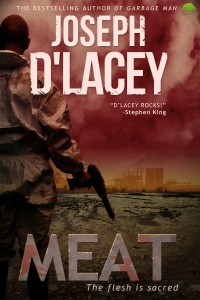 In 2008, with his debut novel, MEAT, Joseph D’Lacey sprayed the scene with blood. Even Stephen King said its author ‘rocks’. Garbage Man came next, after which we heard little from D’Lacey until earlier this year when Angry Robot published Black Feathers (reviewed here). During this interval, his first novels fell out of print. But we’re in for a treat this Halloween, as both MEAT and Garbage Man will be re-released, or as D’Lacey calls it here, reconstituted and recycled.
In 2008, with his debut novel, MEAT, Joseph D’Lacey sprayed the scene with blood. Even Stephen King said its author ‘rocks’. Garbage Man came next, after which we heard little from D’Lacey until earlier this year when Angry Robot published Black Feathers (reviewed here). During this interval, his first novels fell out of print. But we’re in for a treat this Halloween, as both MEAT and Garbage Man will be re-released, or as D’Lacey calls it here, reconstituted and recycled.
MEAT twists around the mechanized workings of the industrial slaughterhouse as only a grim and uncompromising horror novel can. Set in a future devastated by an unspecified apocalypse, one small settlement holds out, surviving on meat. Sacred meat. I don’t think it will come as a huge surprise where this meat comes from, because that particular twist isn’t the point. The point of this novel is the exploration of what participation in such a soulless and mechanized form of taking life does to the psyche, which then leads the reader to consider the nature of human cruelty in general, how we’re able to hollow ourselves out of our own humanity and become less than the beasts we slaughter. Can we save ourselves from such a spiritual death? I don’t know. Read the novel and find your own conclusions. I won’t go so far as to say this novel changed my life in the way the research and writing of it changed D’Lacey’s (he’s now a vegetarian), but it certainly got me to thinking more about the food I eat. The same could happen to you, especially if you follow his advice in the post-script, where he suggests you go online and look at some slaughterhouse footage. Do it after reading the novel. Go on. Read the novel. Look at the footage. Then think about it next time you’re faced with a plate of veal. I dare you.
I had a chance to ask D’Lacey a few questions about the novel and its imminent reconstitution. I first asked him to talk a bit about MEAT’s gestation.
RK: Talk a bit about how MEAT came into being.
JDL: MEAT evolved from a collision of ideas and circumstances: my desire to write something truly gruesome, a long-standing fascination with the ‘ethics’ of killing for food and the proximity of my home to a real slaughterhouse. At the time, a story about humans farming humans for meat seemed full of possibility and MEAT was the result.
RK: That novel earned some wide acclaim. Stephen King read it and proclaimed that you ‘rock’. You won the BFS award for Best Newcomer. But after your second novel, you didn’t publish any more novels until this year. What happened?
JDL: Despite the attention the novel attracted, the success it brought was short-lived. Beautiful Books turned down the third novel I wrote for them and went out of business soon after. It took me a couple of years to get back in the game.
MEAT and Garbage Man were withdrawn from sale when Beautiful Books went under but Oak Tree Press were keen to rerelease them. Both books have had full makeovers inside and out and the new editions give me hope that they’ll be around for a long time.
 RK: What do you mean by ‘full makeovers inside and out’? ‘Out’ would indicate new covers. Does ‘inside’ indicate you’ve re-written parts?
RK: What do you mean by ‘full makeovers inside and out’? ‘Out’ would indicate new covers. Does ‘inside’ indicate you’ve re-written parts?
JDL: Both novels have been re-edited and re-proofed. There were minor adjustments necessary on MEAT and the original Garbage Man was pocked with typos and other errors, all of which have now been addressed. MEAT has a new preface and Garbage Man a new afterword. Both acknowledgements sections have been rewritten and updated to reflect interim events and, of course, as you mentioned, they have brand new covers.
RK: I’m aware that the researching and writing of MEAT affected you deeply. How has that played out in your subsequent writing?
JDL: Ecological themes continue in some but not all of my work. After writing two adolescent protagonists for The Black Dawn series, I’m hoping to further explore rites of passage in future tales.
Both MEAT and Garbage Man are published by Oak Tree Press on the 28th of October.
POV by Chris Brosnahan – Review
 I remember being about seven and standing up in Mrs Mullen’s 1st-grade classroom at Logan School and squinting at the blackboard. Mrs Mullen snapped at me. “Ricky”—as they called me back then—“you need glasses!” So right away I became four-eyes. Six years later, I traded the specs for contacts (and became covert four-eyes, I guess). This was the 70s, practically the contact lens Stone Age, and these rock hard convex discs of plastic that allowed no oxygen to pass may as well have been actual stones. But I learned to stick the things into my eyes. Day after day after day I stuck them in. My eyes practically grew calluses they became so impervious to pain. Until I was 17, when, at basketball practice one afternoon, a kid named Mark Lovdahl tried to steal the ball from me and instead gouged my eye. His finger broke my rock-hard plastic lens, which stayed in my eye. It took half an hour to get me to the eye doctor so he could take it out. During that time, each blink sent the jagged broken lens across the surface of my eye like the blades of a thousand skaters over ice. I could almost hear the scrape. Any idea how many times you blink in half an hour? The next day I missed practice. I was wearing an eye patch. But, soon enough, I was back to sticking those rocks into my eyes.
I remember being about seven and standing up in Mrs Mullen’s 1st-grade classroom at Logan School and squinting at the blackboard. Mrs Mullen snapped at me. “Ricky”—as they called me back then—“you need glasses!” So right away I became four-eyes. Six years later, I traded the specs for contacts (and became covert four-eyes, I guess). This was the 70s, practically the contact lens Stone Age, and these rock hard convex discs of plastic that allowed no oxygen to pass may as well have been actual stones. But I learned to stick the things into my eyes. Day after day after day I stuck them in. My eyes practically grew calluses they became so impervious to pain. Until I was 17, when, at basketball practice one afternoon, a kid named Mark Lovdahl tried to steal the ball from me and instead gouged my eye. His finger broke my rock-hard plastic lens, which stayed in my eye. It took half an hour to get me to the eye doctor so he could take it out. During that time, each blink sent the jagged broken lens across the surface of my eye like the blades of a thousand skaters over ice. I could almost hear the scrape. Any idea how many times you blink in half an hour? The next day I missed practice. I was wearing an eye patch. But, soon enough, I was back to sticking those rocks into my eyes.
All of this is to give you some idea as to the lack of squeamishness I feel about objects touching my eyes. Sometimes, to freak people out, I’ll just poke myself in the eye in front of them and watch them squeal.
However …
The opening passage of Chris Brosnahan’s POV made my flesh writhe. Here’s some highlights.
“I pushed the needle into the woman’s eye. She squirmed.”
“‘It’s going exactly as it should go,’ I said, pressing down on the syringe’s plunger.”
“If I stopped now … the liquid would just settle at the bottom of the vitreous humour, rather than filling it.”
Get the idea?
Well, maybe you do, and maybe you don’t. This isn’t body horror, though some pretty awful things happen to eyeballs in this novella, and to the owners of those eyeballs. But this is also a clever, imaginative and fast-paced near-future sf thriller with its fair share of amusement. I thought at times of Philip K Dick. I thought of William Gibson. And I kept thinking, I really want to see this on the big screen.
Without giving away too much, John MacFarlane, POV’s narrator, works as an optometrist specializing in the new technology dubbed IDRoPS (Internal Display Retina Operating Systems). IDRoPS, once installed via that ball-popping syringe of the opening passage, allow you to control your visual environment so that, for instance, if you want your wife to look like Angelina Jolie or your husband to look like Ryan Gosling, it’s merely a matter of a few mental adjustments and voila, your every fantasy fulfilled. IDRoPS have a lot of other uses, too, that I won’t go into here, but their popularity leads to problems for MacFarlane. Someone really likes his work. So much so, that the corpses of his former clients begin to turn up sans eyes. What is it about MacFarlane’s work in particular that would prompt someone to collect such gruesome harvest?
To answer that question, POV takes its readers through more twists than a helter-skelter. And here’s the real sucker-punch, for any writers out there who may sometimes fall victim to a bit of the ol’ writer’s block. This novella was a prize winner. Fair enough, you may say. Except when you find out what the contest was. Everyone who entered this one had to write a novella in 30 (weeks? days? nope) hours. That’s right. Chris Brosnahan wrote this dizzying sf techno-thriller in just 30 HOURS! (Yes, that’s what it looks like when I shout.) It unnerves me to ponder what his imagination might produce with a full-on novel over a period of, like, a year or so. I guess that will come in the near-future.
In the meantime, I guess I’ll just go poke myself in the eye.
(POV is available now as an e-book on Amazon for 99p.)
Screw ’em. They Live In Tottenham
Almost two years ago to the day, on the 18th of August, 2011, I walked five minutes down the road from where I live in Tottenham and took this picture of Banksy’s No Ball Games. I proudly posted it on Facebook to an artist friend of mine in the US who couldn’t believe I lived so close to a real Banksy. About a week earlier than that, Tottenham had been in flames, set alight in local riots. Venturing out to once more view No Ball Games, our very own Banksy, helped me begin to heal.
This morning, in roughly the same location, I took this picture. 
A corporation called the Sincura Group, who describe themselves as “the market leaders in VIP concierge, lifestyle, tickets and events …” and as the “the best connected network in London”, now claim to be “representing” the piece. By “representing”, I think they mean removing No Ball Games from the wall and selling it at private auction. My guess is, the VIP whose lifestyle Sincura is catering to in this instance doesn’t live in Tottenham.
In fact, I think Tottenham is the last place on the Sincura Group’s mind. If you read their website, where they actually have a special section set aside to advertise their “representation” of Banksy, the Sincura Group make the positively Orwellian claim to have “salvaged” No Ball Games for “renovation”. They say a number of attempts have been made to deface the work, and that it will now “be sensitively restored to its former glory”. As you can see from my post-riot photos, the piece had lost none of its glory. In fact, by surviving the riots, No Ball Games had gained glory. Of course, what Sincura conveniently leave out is that No Ball Games had a clear plastic protective sheet over it. It could not be defaced.
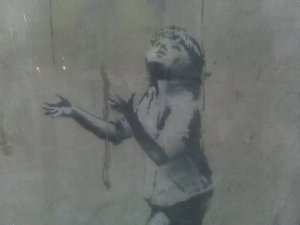
Peeling back the oily layers of justification smothering the motives of Sincura’s action both here and in Wood Green, a short bus ride away where Sincura also oversaw the removal of Banksy’s Slave Labour, one thought emerges: Fuck ‘em. They live in Tottenham. Sure, the profits from the sale will go, so they say, to charity. But someone, some wealthy and powerful VIP, likely whispered to Sincura, who are after all “the best connected network in London”, that it sure would be nice to own a Banksy. That person doesn’t have charity on his brain, or art appreciation. That person has money on his brain. No Ball Games, when it goes on auction at Sincura’s 2014 Art Exhibition, once sold, will then be re-sold for profit. It’s now a commodity. (How much “glory” is there in that?) The people of Tottenham, whom Banksy deemed worthy of hosting his iconic art, the people who felt special to have it in their neighbourhood (and who have little enough to feel special about in this deprived area), will never see No Ball Games again. Because, when there’s money to made, well, fuck ‘em. They live in Tottenham.
The Blue Blazes by Chuck Wendig – Review
 Six weeks ago I’d never heard of Chuck Wendig. Then someone suggested I follow him on Twitter for his writing advice. Who was this un-heard-of person dispensing writing advice via Twitter that I should be so interested? (This, of course, from the ego-center of my own puny universe.) But I went ahead, and right-away saw that he was published by Angry Robot. Pretty good creds, so I decided to test him out. I didn’t want to start from the beginning, though. I wanted to see who, writer-wise, Chuck Wendig is now. So, thanks to an advance copy of his forthcoming novel, The Blue Blazes (thanks, Angry Robot), I was able to find out. Suffice it to say that Chuck Wendig has moved from one of the many Un-Heard-Of-So-Don’t-Care seats in the back of my brain to occupying a spot in the far less populated Important-Writers section up front.
Six weeks ago I’d never heard of Chuck Wendig. Then someone suggested I follow him on Twitter for his writing advice. Who was this un-heard-of person dispensing writing advice via Twitter that I should be so interested? (This, of course, from the ego-center of my own puny universe.) But I went ahead, and right-away saw that he was published by Angry Robot. Pretty good creds, so I decided to test him out. I didn’t want to start from the beginning, though. I wanted to see who, writer-wise, Chuck Wendig is now. So, thanks to an advance copy of his forthcoming novel, The Blue Blazes (thanks, Angry Robot), I was able to find out. Suffice it to say that Chuck Wendig has moved from one of the many Un-Heard-Of-So-Don’t-Care seats in the back of my brain to occupying a spot in the far less populated Important-Writers section up front.
He’s imaginative, funny, profound, tough, and poetic all at once.
So, The Blue Blazes is essentially a crime story—or, shall we say, an underworld story. An underworld journey. Dante meets The Sopranos. In Wendig’s New York City, the criminal underworld is aligned to the spiritual underworld, if you can call slobbering goblins (street slang gobbos) who use their tongues to lay eggs under your skin spiritual, that is. The conceit is, all those creatures you’ve ever imagined living underground actually do live underground, and sometimes above ground; it’s just that blinkered folks like you and I can’t see through their disguises. However, if we could get our hands on some of the blue powder that gives the novel its name and rub it into our temples, we, too, could see through the veil and behold the monstrosities that walk among us.
That’s where the crime bosses come in. Blue, Cerulean, The Blue Blazes (some of its many names) is rare, hard to get, and addictive. It’s mined from down below, and the bosses control the flow. The protagonist, Mookie Pearl, works as muscle for the most powerful boss in the city. But simply calling Mookie muscle is like calling The Hulk kinda strong. Wendig describes him as “a brick shithouse made of a hundred smaller brick shithouses”. He’s “a man whose bones are wreathed in fat and gristle and muscle and sealed tight in a final layer of scar-tissue skin.” I picture him being unable to fit through my front door, even if he ducked and turned sideways. (He’d probably just bust through the wall.)
Mookie knows the underworld, both above and below. He can fight off the hoards of gobbos and knows where to procure the Blue. But problems arise when the boss’s health begins to fail and the anticipated power-vacuum gives every gang in New York the idea of making a move. Mookie gets caught up in the violence of the political power-play in ways he’d never have anticipated (even his own daughter guns for him), and must journey to parts of the underworld rarely, if ever, seen by man, in search of substances of colors other than blue, which may or may not exist and which may or may not grant powers such as resurrecting the dead and berserker rage.
Yes, this is all imaginative as, well, hell. And, yes, Mookie is an entertaining character to follow—brutal, yet surprisingly tender; both hero and schmuck. (At one point, all we want is for him to be able to eat the food he keeps comically getting taken away from. He’s practically got a gourmet’s palette when it comes to charcuterie.) But what makes this novel special is Wendig’s style. This is punchy crime-writer prose with figurative detours that suggest Raymond Chandler is actually a shambling zombie holed up in Wendig’s office whispering dark and sickening tales of the otherworld in his ear. Just a few examples:
“… the years chewing at his joints like rats eating wires.”
“Voice like dry leaves in a closing fist.”
“The kid hurries up to the front like a couple mop handles falling out of a hallway closet.”
“… a chill runs over his hide like a tide of spiders.”
You get the picture.
There’s so much more. I like the way Wendig ties his underworld in not only with the expected hell, but every other underworld the human race has ever imagined, from Gimkodan and Hades to Naraka and Tartarus, thus setting his story into the context of world mythology and comparative religion. And we get a kind of Marco Polo account of its largely unexplored depths through ongoing glimpses of chapter-heading diary entries by one John Atticus Oakes, Cartographer of the Great Below, who may or may not have existed and whose journal may or may not be real (though we suspect it is).
And after all this, I feel like I’ve only peeked beneath the upper-crust of this novel. We will see more of Mookie Pearl, the Get Em Girls, the wandering shades of Daisypusher and the Hungry Gods. This story is far from over. Lucky us. While I wait for the next in the series, I’ll go back and check out his Miriam Black series. Watch for their reviews here.
Oh, and you can follow Chuck Wendig on Twitter. He really does dispense some useful advice for writers, now that you’ve heard of him.
The Blue Blazes publishes on 28th of May by Angry Robot.
